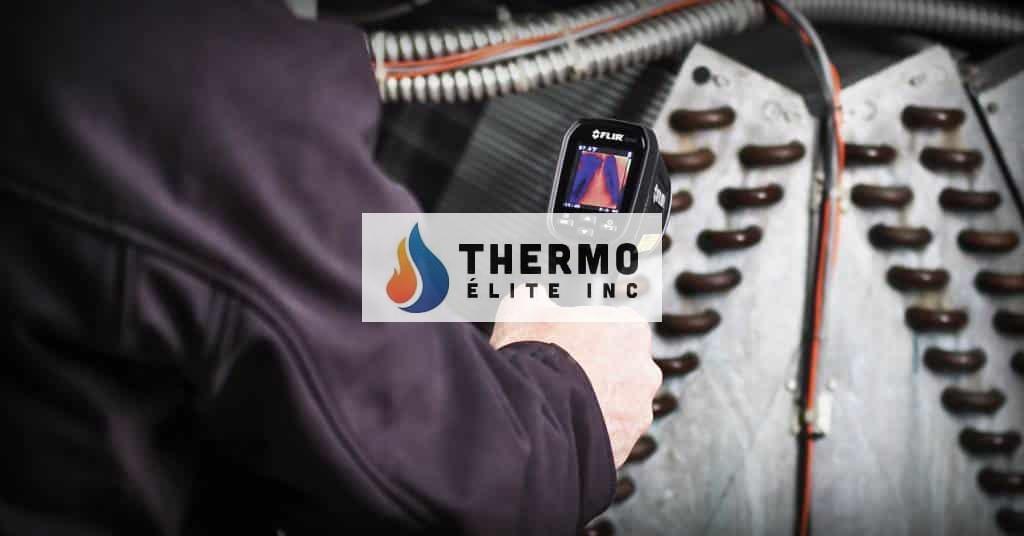Inspection of electrical panels has become much more convenient, efficient, and safe using an Infrared camera. You won’t need to dismantle electrical panels or components to identify insulation deterioration, unbalanced loads, poor connections, or other issues.
You end up using excess power or facing significant equipment damage & failures, which may interrupt your business suddenly without timely and proper inspection. Your maintenance costs shoot up as well. While we tell you how you should use an IR camera to inspect electrical panels, we will also discuss other applications.
Why is Thermography Inspection of Electrical Panels Important?
The National Fire Protection Association found out in an assessment that 10% of fires are caused due to terminal failures, faults in the electrical systems, problems in the electrical insulation, and other components. To ensure that safety guidelines are complied with, the Electricity at Work Regulations Act, 1989, the BS 7671 (IEE Wiring Regulations 17th Edition as amended), and the Health and Safety at Work Act of 1974 mention the necessity for regular maintenance of the electrical infrastructure.
Thermal cameras capture temperature differences in the form of images with different colours indicating hot or cool temperatures. The difference in temperatures displayed in the images through different colours indicates problems in the electrical panel.
There may be severe injuries or loss of life if anyone comes in contact with live electrical circuits. If you can locate and repair zones with high temperature which indicate leakages on time, you can avoid breakdowns of the electrical wires and other related components.
There are other benefits, with shutdowns being reduced, repair charges being kept in check, and efficient energy conservation. High resistance in the circuits causes an increase in current flow, which increases power consumption. Electrical circuit components like circuit breakers, transformers, and fuses may collapse prematurely. As a result of such failures, you face frequent business interruptions and a rise in maintenance and repair costs.
The Benefits of Conducting Thermography Testing on Electrical Panels
- You can check if there’s been any damage to the electrical systems and components and know if their installation has been proper
- You can reduce downtime
- You reduce the risks of equipment failure
- You can improve the safety procedures
- You ensure an improvement in insurability and the performance of systems
- You can determine if the components and systems are operating correctly and whether the design intent has been met
- It helps you ensure compliance of the components and systems with the design and specifications envisaged in the project
- You reduce construction delays
- You also ensure cost-cutting and cost-saving
How is Thermography Testing of Electrical Panels with Infrared Cameras Done?
Infrared cameras produce a thermal picture after measuring infrared radiation emissions from any heated object. Modern thermal imagers come with easy-to-operate controls, and they are portable as well. Moreover, there’s no loss in production or downtime as no direct contact with the system is necessary during testing, which can be carried out in a wholly energized state.
The Procedure Involved in Thermography Testing
- You shall have to put the panel identified for testing under adequate load after being energized. The standard operating load is recommended.
- You should carry out an external inspection of the panel before any protective covers are removed. This is to determine if unsafe conditions exist. If they do, proper corrective steps by a qualified person become necessary.
- You should open the electrical panel enclosures for line-of-sight access to the components inside. Further disassembly may be necessary for a more comprehensive test.
- You shall have to take the necessary steps for good and complete imaging of the panel concerned.
- The nature of infrared testing may be qualitative or quantitative.
- The thermographer shall have to use an IR camera for qualitative testing and not an imaging radiographer used for quantitative tests. You should set the resolution properly for a clear image of the panels tested
- The thermographer must ensure that the non-contact temperature readings are precise when the thermograph testing is carried out.
- A comparison of similar components under similar loads should be made if possible.
You should exclude the components which show abnormal thermal patterns or
- Temperatures when being operated and prepare reports with thermal images and visible light images
- You should put your complete focus on thermal pictures. The thermal figures should be saved properly
- It would help if you used a daylight camera to capture visible light picture images as it’s essential to the infrared imager
- The light pictures should be properly visible to get appropriate details
- Perspective, contrast, lighting, focus, and resolution should receive particular attention
- Include both thermal and visible images to prepare the report
Preparing the Report and Documentation
- Whenever possible, compare the maximum rated load of any exceptions with the load measured during testing
- Include the transmittance values necessary to find the faulty component’s temperature in the report
- You should take into account the surface temperature of the exception and the referred standard temperature when taking the absolute temperature into consideration
- You may also include the exception’s temperature severity in the evaluation if you want
- You may include a priority rating for repairs of the faulty components while mentioning the temperature severity rating as well
Conclusion
Gone are the days when thermal imaging cameras were bulky devices challenging to use. These days they are portable and very user-friendly. Highly sophisticated technology is used to accurately locate faults in equipment and carry out timely repairs reducing downtime.
Infrared cameras are being used extensively in various fields for better results. For example, IR cameras can detect faults in electrical panels without them being dismantled, ensuring that there’s no disruption to normal functioning. Their use in testing electrical panels can significantly help reduce safety risks, save costs, and reduce construction delays.



